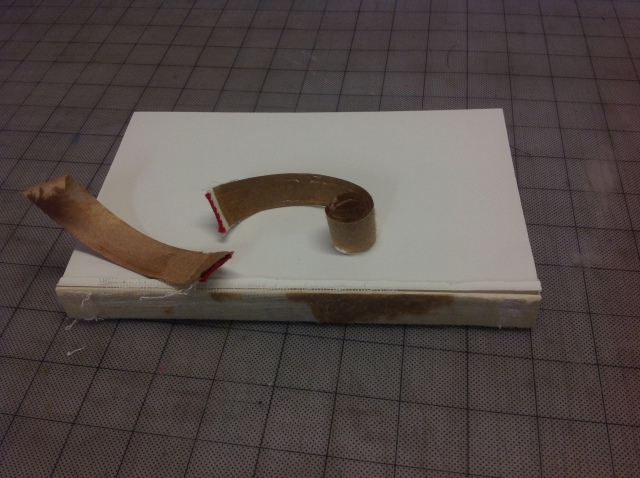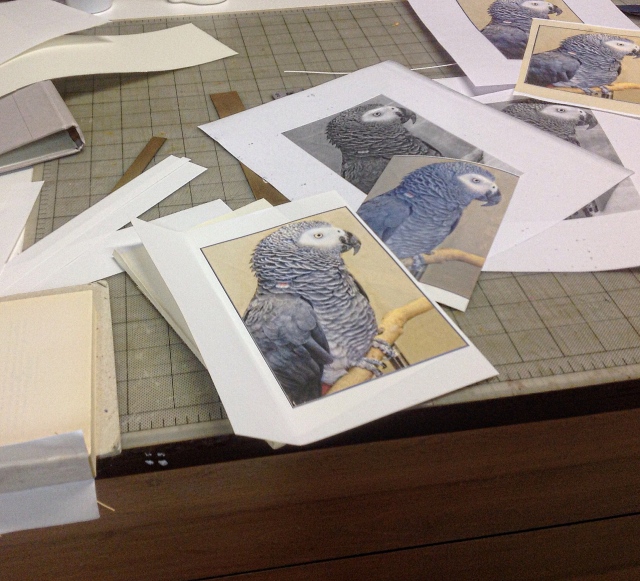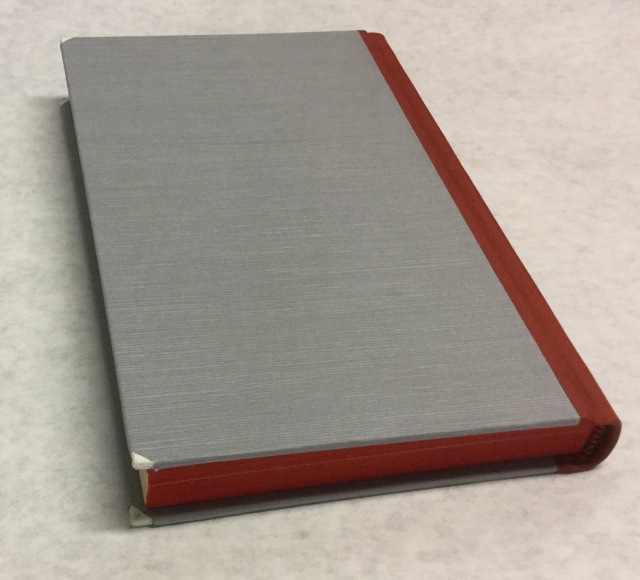My current project is rebinding a copy of “Alex and Me”, by Dr. Irene Pepperberg. I’m amazed by the groundbreaking work she did with Alex, the famous African grey parrot. Alex could identify – in spoken English – more than 100 objects and say what color they were, what shape, how many, what material, and whether an object was bigger or smaller than another one. He even had a concept of “nothing” or “zero”. He was intelligent, with an outsize personality and a sense of humor. Dr. Pepperberg always referred to him as a colleague, and their achievements changed everything we know about animal cognition. Before Alex, scientists thought only a few primates were capable of human-like thought, and that birds were at best imitators and mimics. Alex performed at the level of a five year old human child on many tests.
Sadly, Alex died in 2007. Dr. Pepperberg’s research is still ongoing, with two African greys named Griffin and Athena. Unbelievably at least to me is the fact that this research is entirely funded by The Alex Foundation, with no federal funding at all. What kind of world is this? Everybody who works in the field of animal intelligence gives credit to Alex for opening an entire realm of possibilities. Together, Alex and Dr. Pepperberg helped changed how we think about how animals think, and inspired a new generation of researchers to continue exploring this incredible new world.
Here’s the work in progress. Remove dust jacket, cut cover off, remove stuck-on headbands and paper spine liner.



Removal of the cover revealed that this is not a sewn binding, but a perfect-bound (glued) book. I will have to recase it, using a few tricks to strengthen the binding.
First, I cut several shallow grooves into the spine, inlaid thin linen cords, applied more EVA, and lined with cambric.


While that was curing, I worked on the unpublished photo sent by Dr. Pepperberg to remove distracting elements and extend the right side of the image. I picked out a couple of quotes for the frontispiece, and printed the new pages on acid-free endpaper using archival inks. I chose heavy red paper for the pastedowns – to match the African grey tail feathers – and made up endsheetsets for front and back.


The new endsheets were sewn to the cambric spine lining, adhered with EVA, then hinged to the first and last pages of the textblock with Japanese paper guards. The cords laced through the spine were adhered to the outside of the pastedowns along with the cambric hinge. Then the text block was put in the press and the top colored to match the endsheets.















